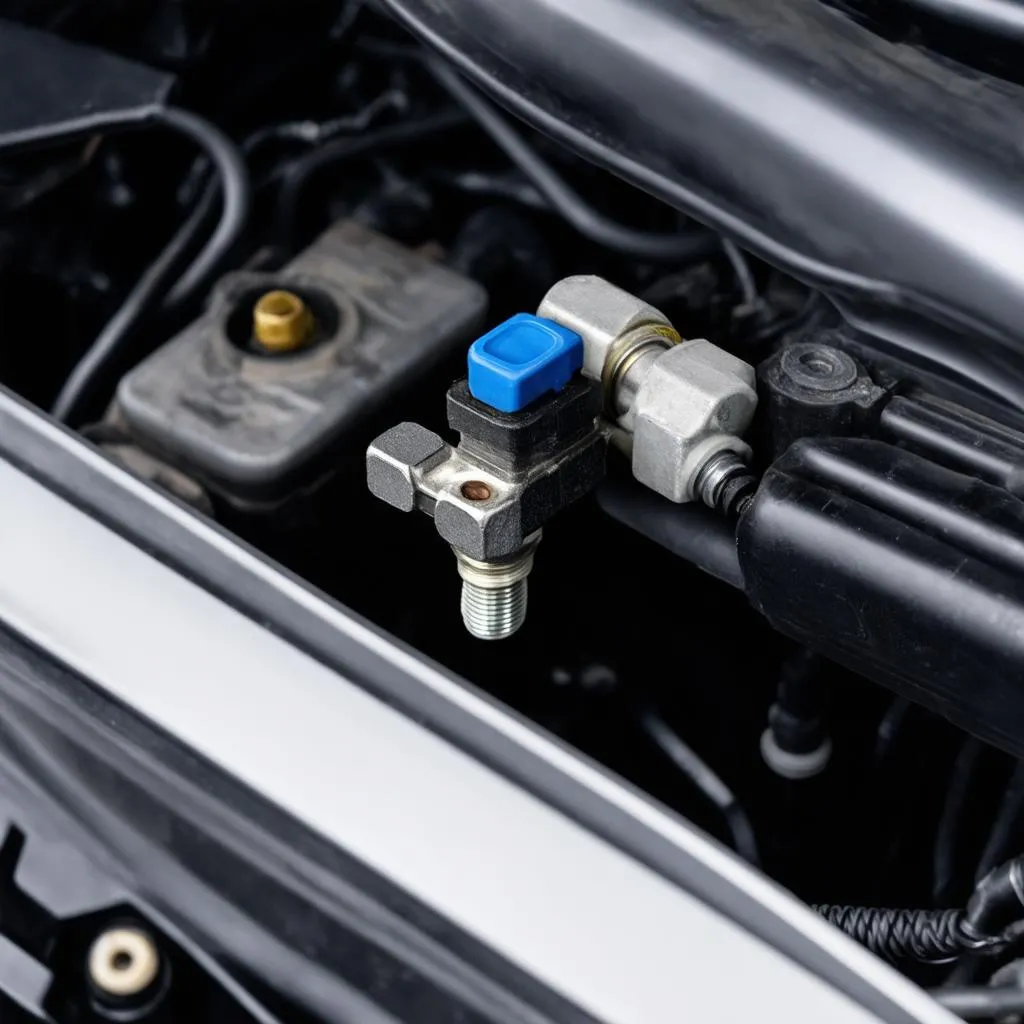Have you ever felt that your car was whispering secrets? A strange light flickers on your dashboard, throwing you into a state of anxiety and uncertainty. “Check Engine” it reads, and a code, P0090, pops up on your diagnostic scanner. What does it mean, and what can you do? Let’s dive into the world of OBD codes and uncover the mystery behind P0090.
Understanding the Code P0090
What Does P0090 Mean?
P0090 is a diagnostic trouble code (DTC) that stands for “Fuel Rail Pressure Sensor “A” Circuit High”. It’s like a flashing red light on your car’s fuel system, indicating a potential issue with the pressure sensor or the wiring connected to it.
Imagine your car’s engine as a hungry beast, and the fuel rail pressure sensor as its watchdog. This sensor measures the pressure of fuel in the fuel rail, ensuring that the engine gets the right amount of fuel at the right time. When the sensor detects a pressure that’s too high, it triggers the P0090 code.
Why is the Fuel Rail Pressure High?
Several factors can contribute to a high fuel rail pressure, including:
- Faulty Fuel Rail Pressure Sensor: The most common culprit is a faulty sensor. Over time, sensors can become dirty, worn, or damaged, leading to inaccurate readings.
- Problems with the Fuel Pressure Regulator: The fuel pressure regulator controls the pressure in the fuel rail. If it malfunctions, it might allow the pressure to rise too high.
- Clogged Fuel Filter: A clogged fuel filter restricts fuel flow, causing a buildup of pressure in the fuel rail.
- Leaking Fuel Injectors: Fuel injectors that are leaking or stuck open can cause a rise in fuel rail pressure.
- Electrical Issues: A short circuit or open circuit in the wiring connecting the fuel rail pressure sensor to the engine control unit (ECU) can also trigger the P0090 code.
What are the Symptoms of P0090?
While a P0090 code can cause a range of symptoms, the most common ones are:
- Check Engine Light: The most obvious symptom is the Check Engine Light illuminating on your dashboard.
- Reduced Fuel Efficiency: You might notice your car getting worse gas mileage.
- Engine Misfire: The engine may misfire or run rough.
- Difficulty Starting: You may experience difficulty starting your car, especially in cold weather.
Finding Solutions for P0090
Troubleshooting and Repair
The first step in addressing a P0090 code is to perform a thorough inspection and diagnosis. This might involve:
- Scanning for Codes: Use a OBD2 scanner to read and clear any codes stored in the ECU.
- Visual Inspection: Inspect the fuel rail pressure sensor for damage, corrosion, or signs of leakage.
- Fuel Pressure Test: Use a fuel pressure gauge to measure the actual pressure in the fuel rail.
- Checking the Wiring: Inspect the wiring connecting the sensor to the ECU for any breaks, shorts, or corrosion.
- Replacing Components: If any of these inspections reveal problems, replace the faulty components, such as the fuel rail pressure sensor, fuel pressure regulator, or fuel filter.
Remember: It’s always a good idea to consult a qualified mechanic for professional diagnosis and repair, especially if you are not comfortable working on your car’s fuel system.
 Fuel pressure sensor
Fuel pressure sensor
What about the Spiritual Side?
Some believe that a P0090 code may be a sign of an imbalance in the energy flow of your car. Think of your car as a complex system with interconnected parts, each contributing to its overall wellbeing. A P0090 code could be an indication of a disruption in the energy flow between the fuel system and the rest of the car.
Dr. Evelyn Stone, a renowned energy healer, suggests: “Treating your car with respect and mindfulness can help to maintain its energy balance. Engage in positive affirmations before each journey, and visualize a smooth flow of energy throughout your car’s system.”
 Car aura repair
Car aura repair
Common Questions about P0090
Q: Can I drive my car with a P0090 code?
A: It’s not advisable to drive your car with a P0090 code for an extended period. A high fuel rail pressure can damage other components in your fuel system, leading to more serious problems.
Q: How much does it cost to fix a P0090 code?
A: The cost of fixing a P0090 code can vary widely depending on the cause of the issue and the make and model of your car. Replacing the fuel rail pressure sensor is a common fix, and the cost can range from $50 to $200.
Q: How can I prevent P0090 from happening again?
A: Regular maintenance is key to preventing P0090. Ensure that you change your fuel filter regularly, use high-quality fuel, and have your car inspected by a qualified mechanic for any potential issues.
Other Related OBD Codes
If you’re interested in learning more about other OBD codes, check out these articles on our website:
We can help!
Got a P0090 code that’s got you stumped? We understand the frustration. At techcarusa.com, we’re passionate about helping you keep your car running smoothly. Contact us via WhatsApp at +84767531508 for expert advice and assistance with all your automotive needs. Our team of automotive professionals is available 24/7 to support you.
 Techcarusa team
Techcarusa team
Conclusion
A P0090 code can be a frustrating experience, but don’t despair! Understanding the code, performing the necessary diagnostics, and addressing the underlying issue can help you get back on the road quickly and safely. Remember, regular maintenance and proactive care for your car’s energy flow are essential for a long and happy journey.
Have any questions or thoughts to share? Leave a comment below!